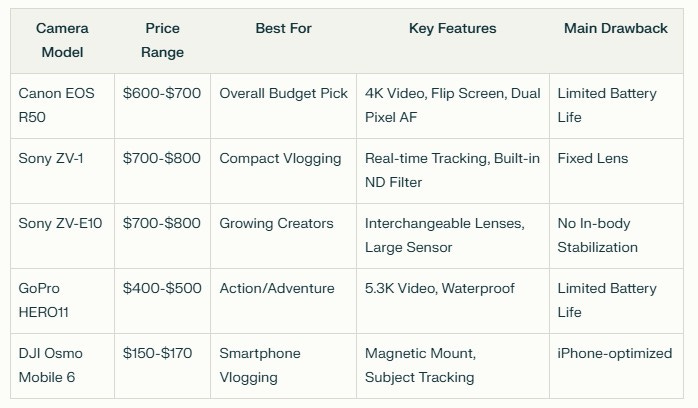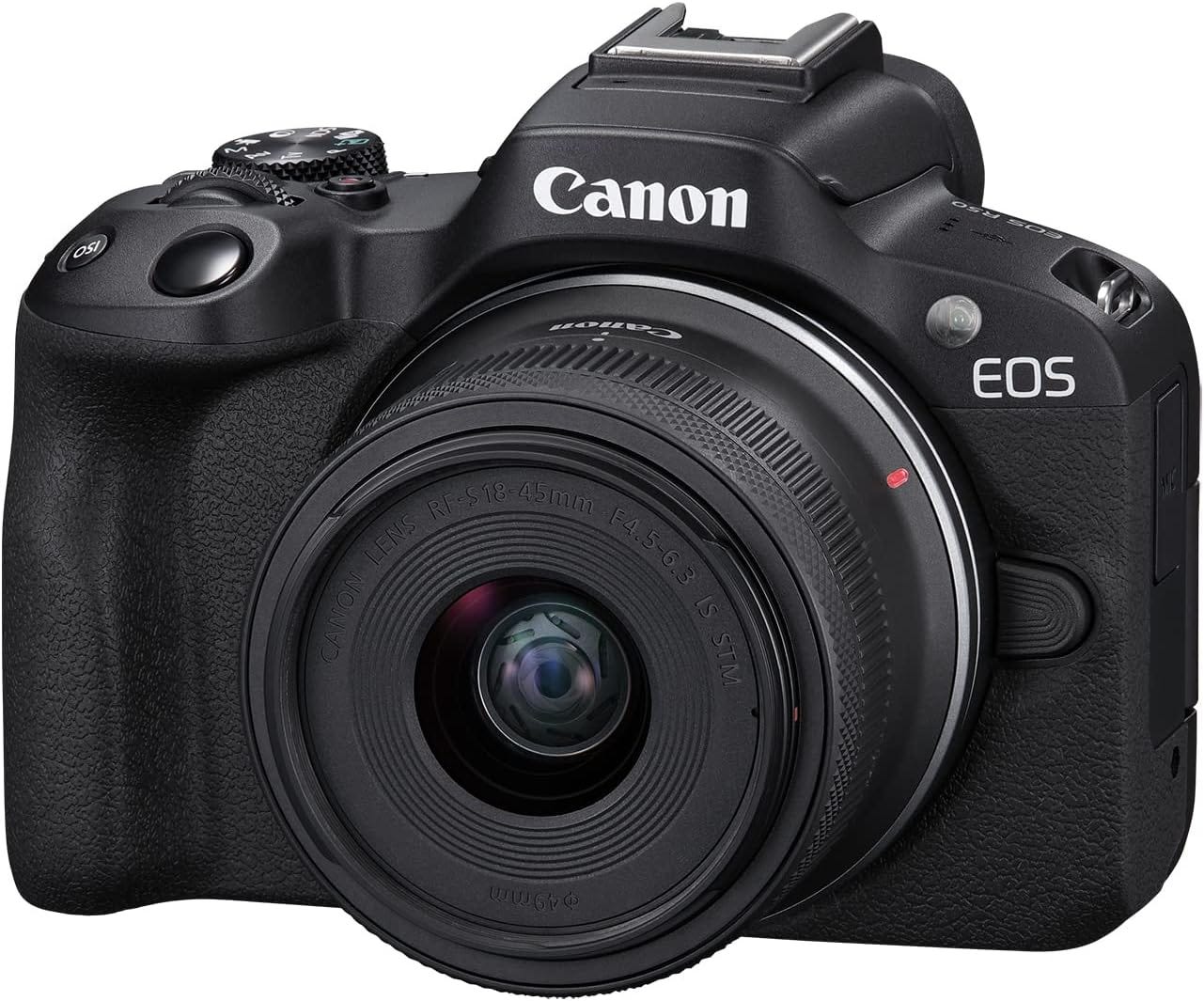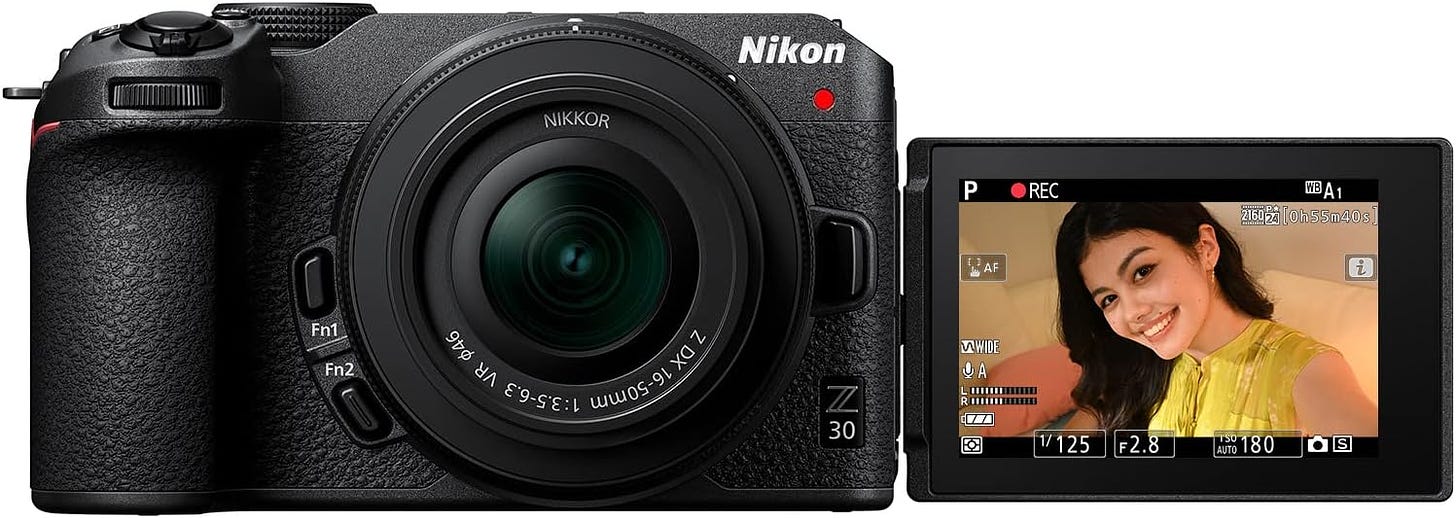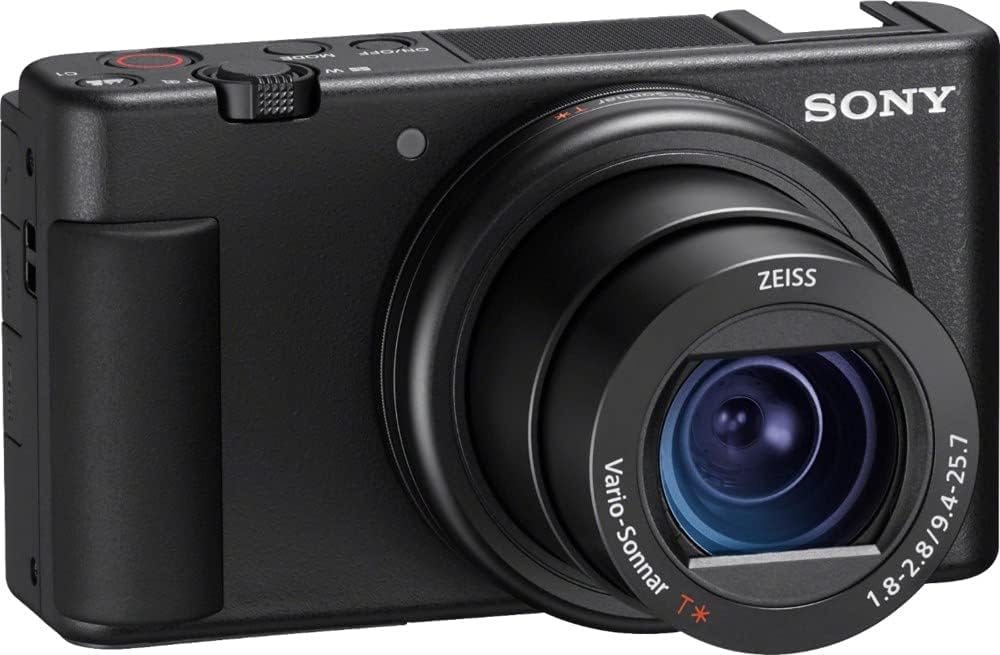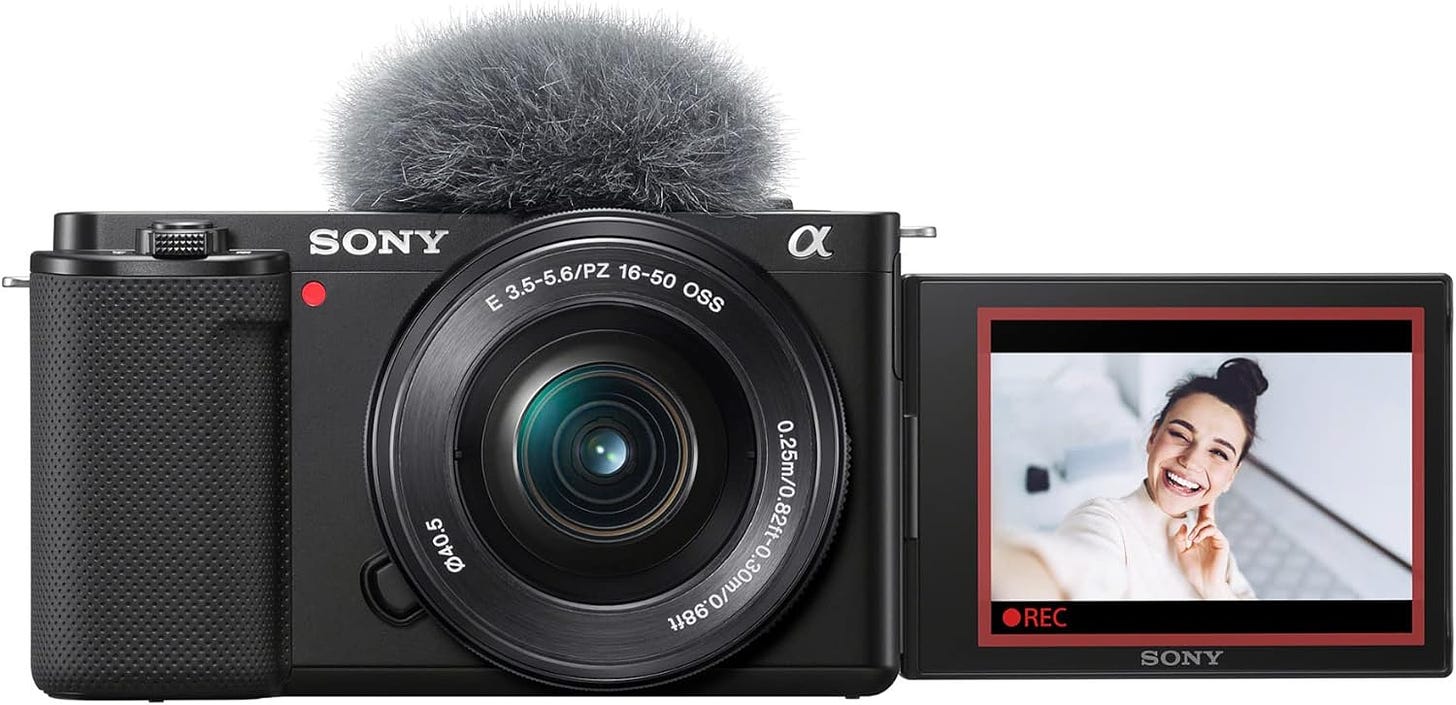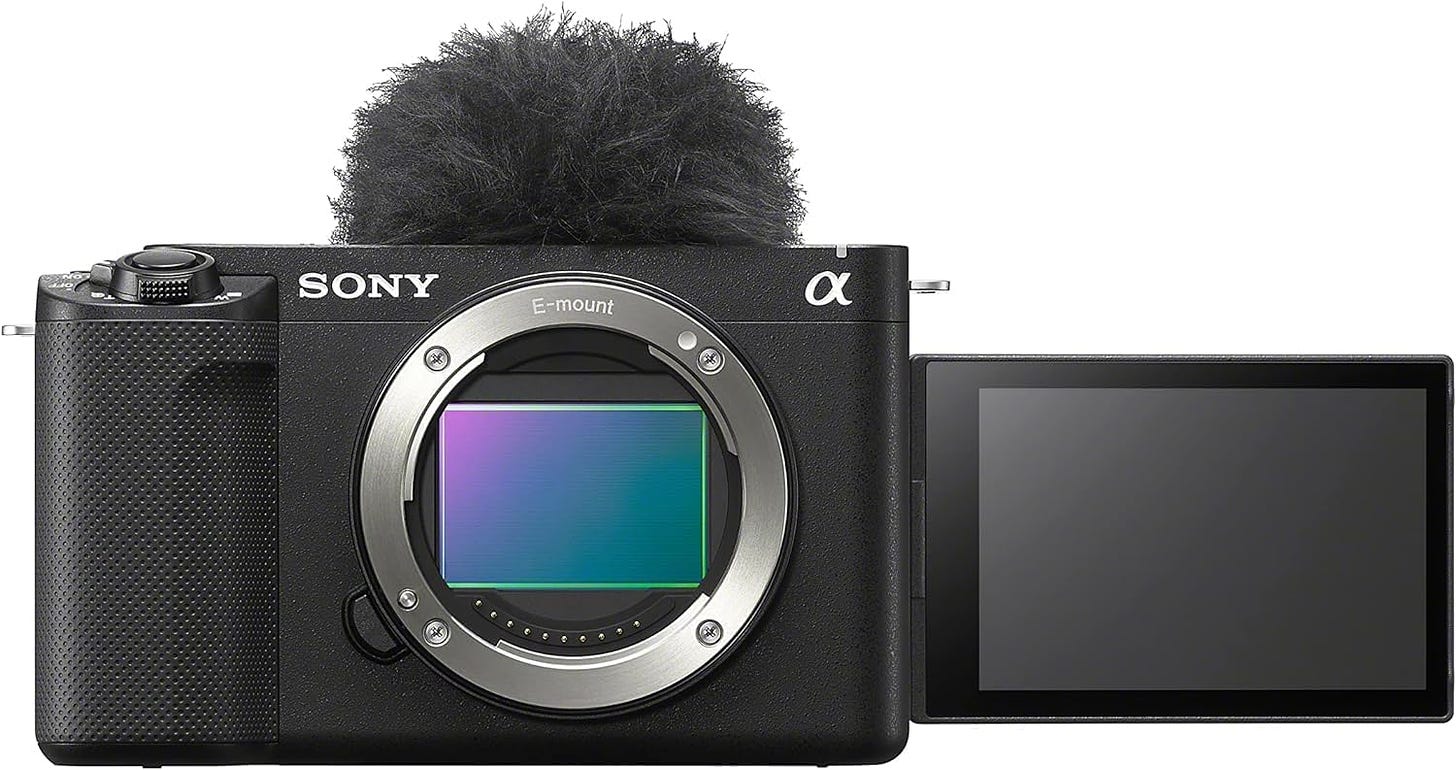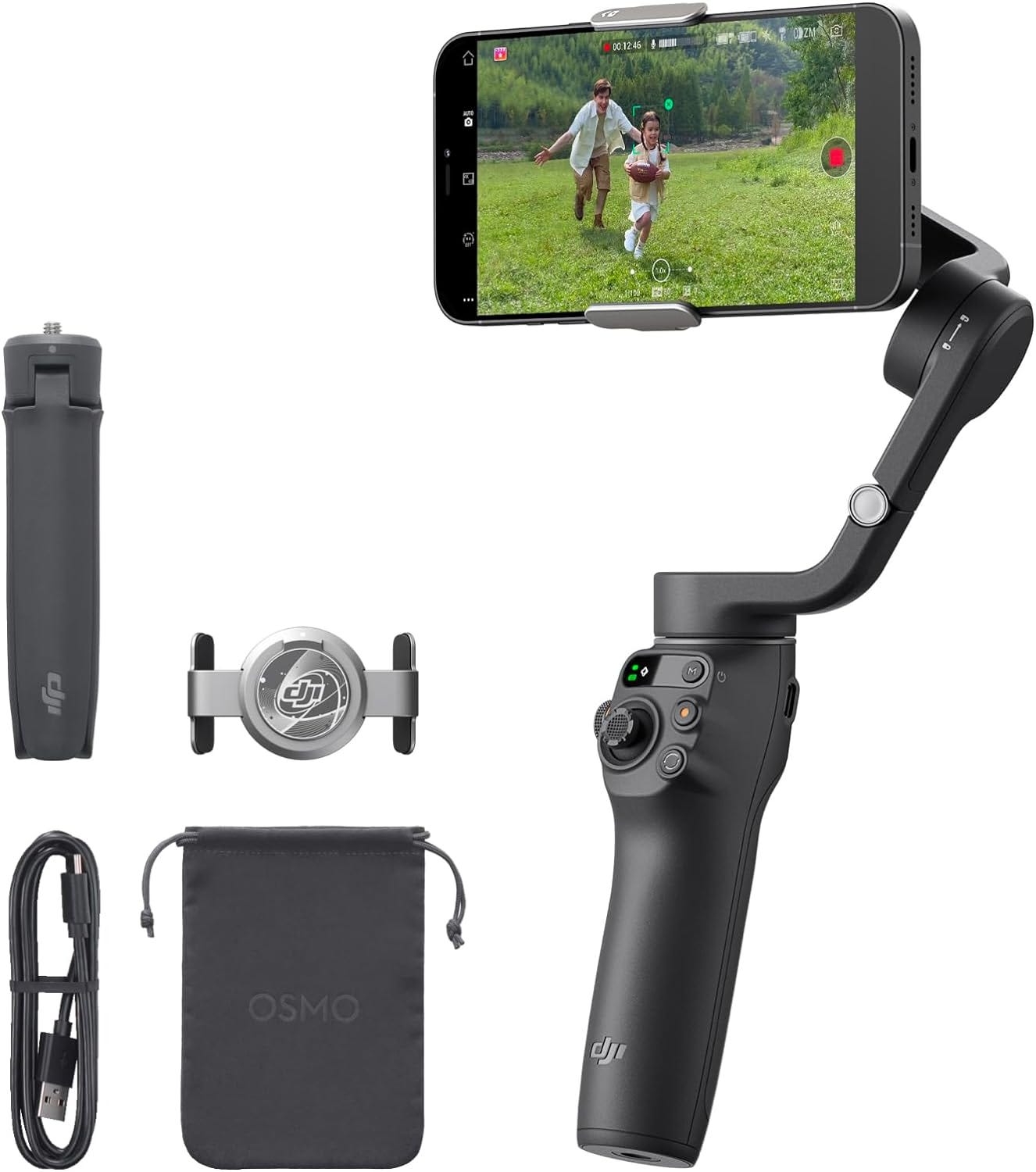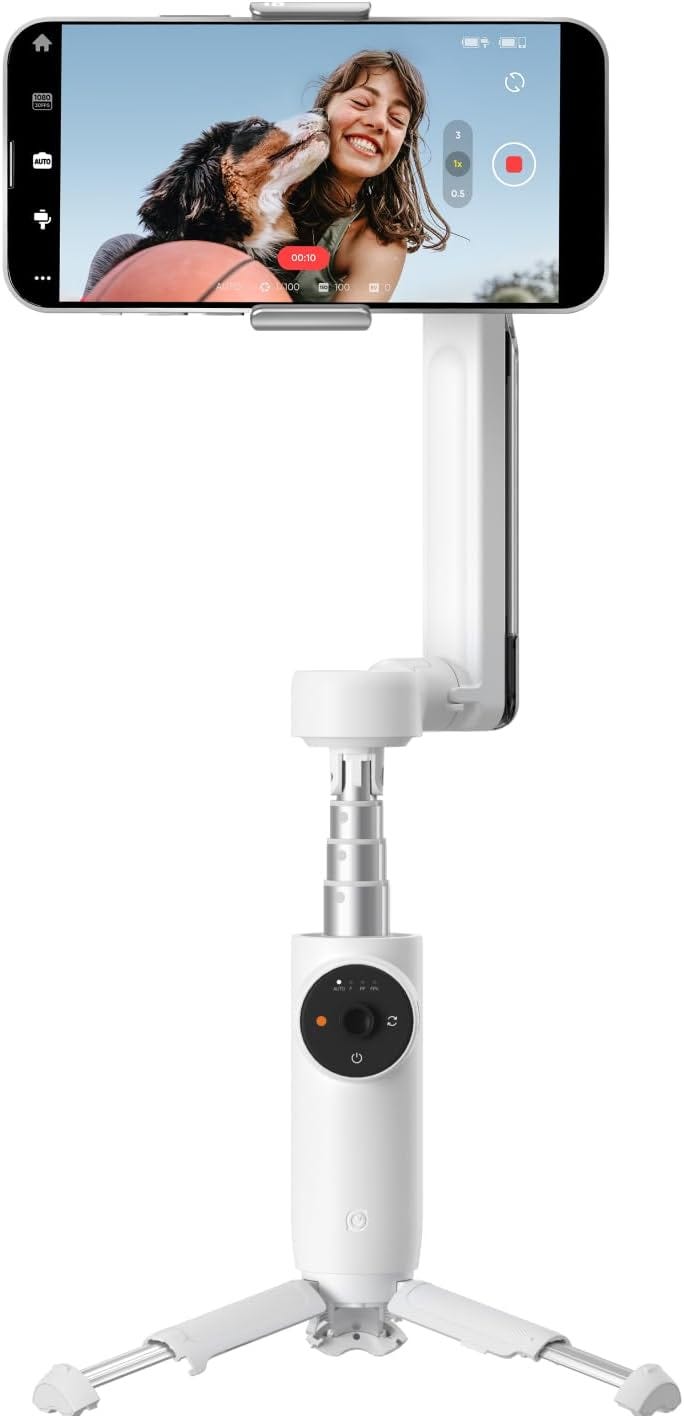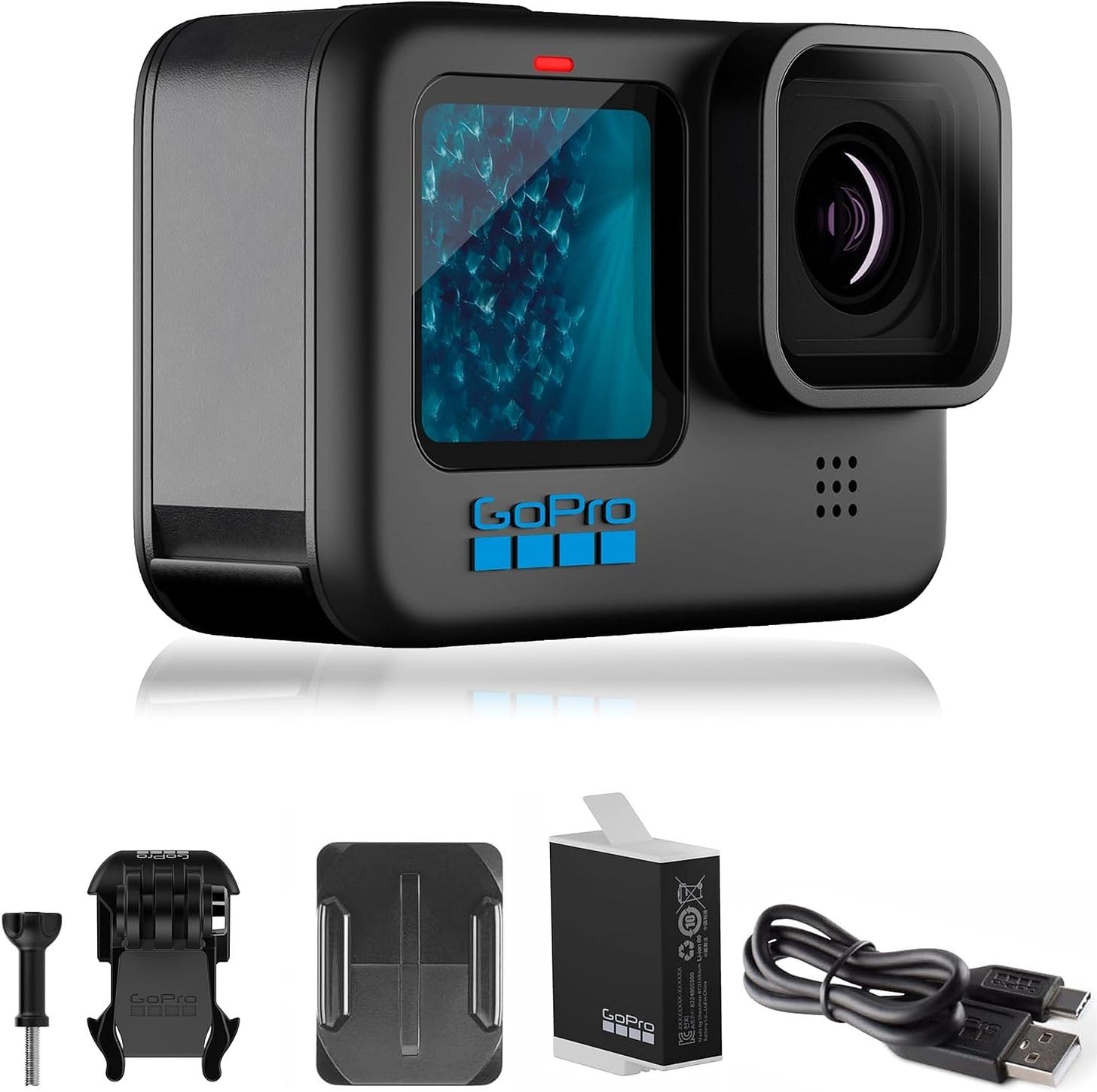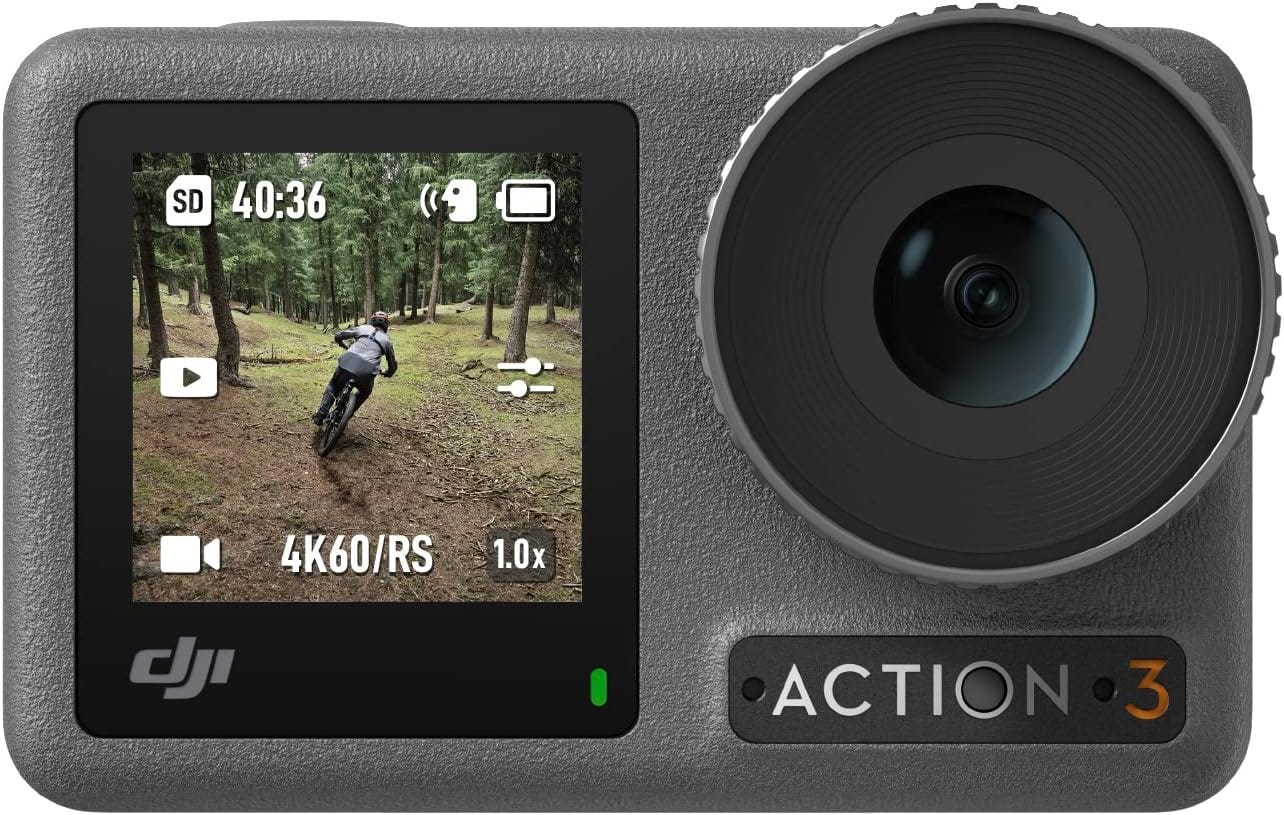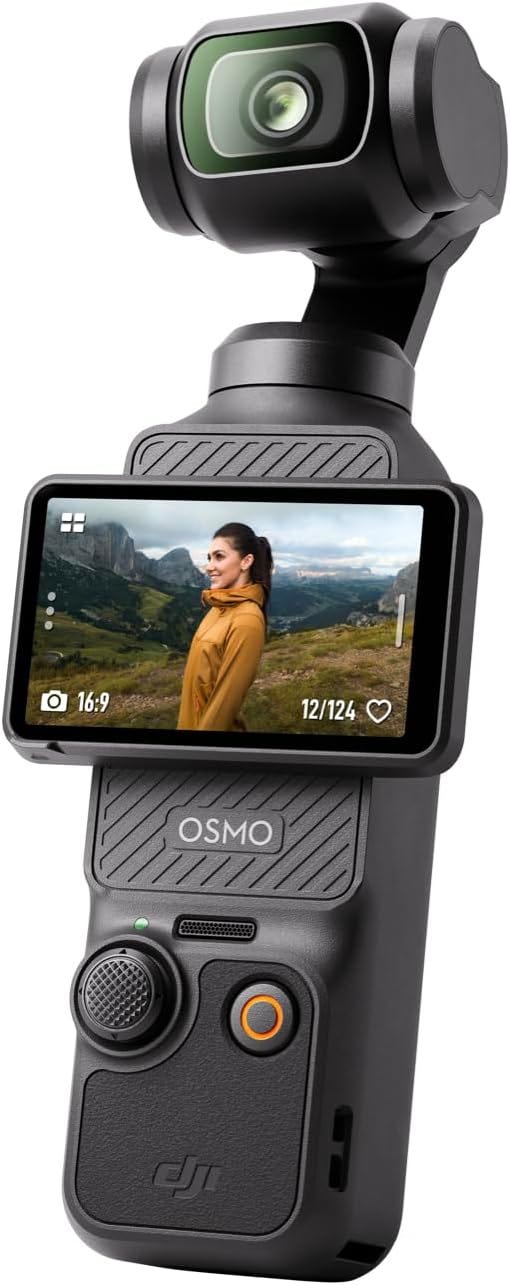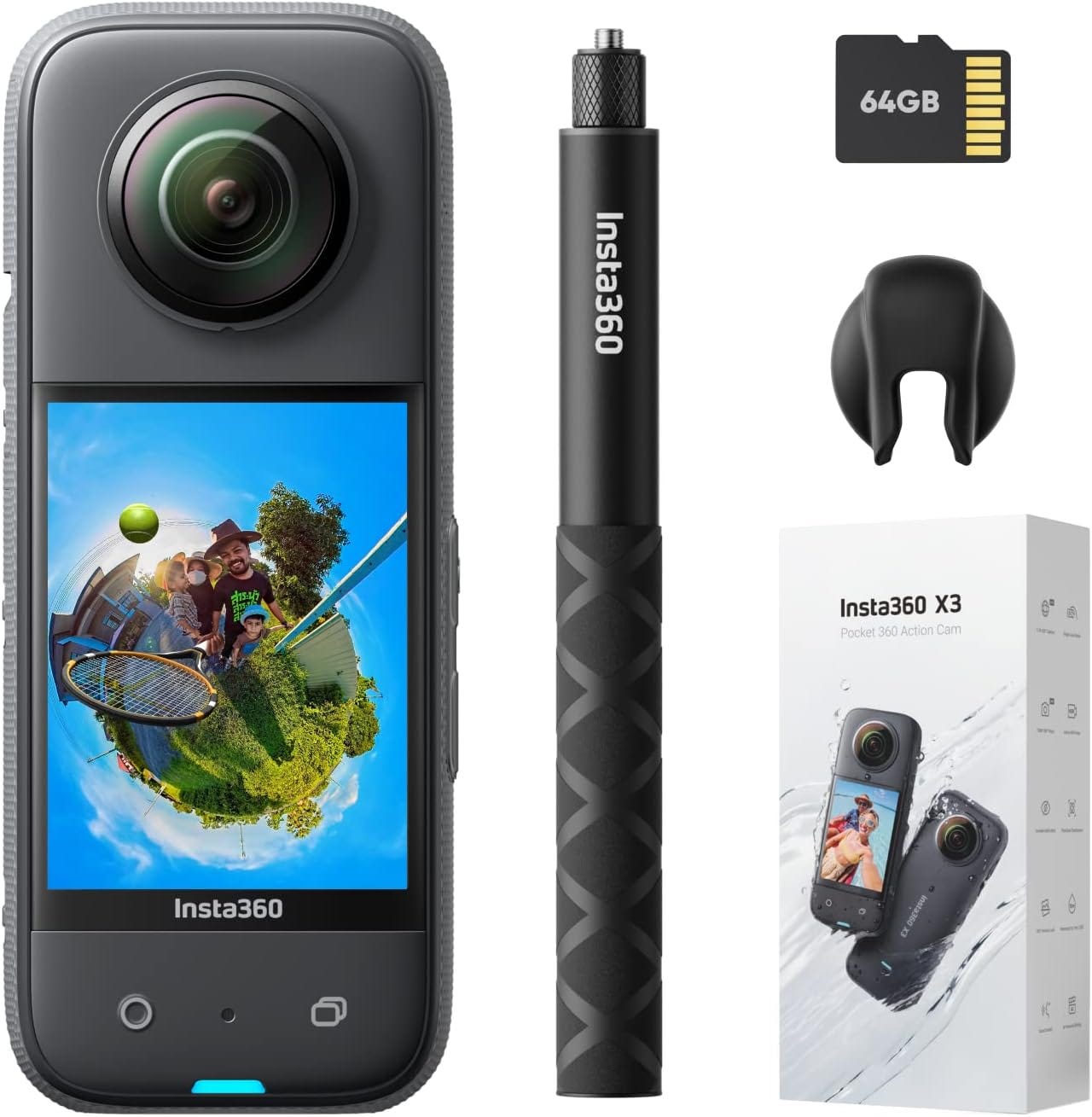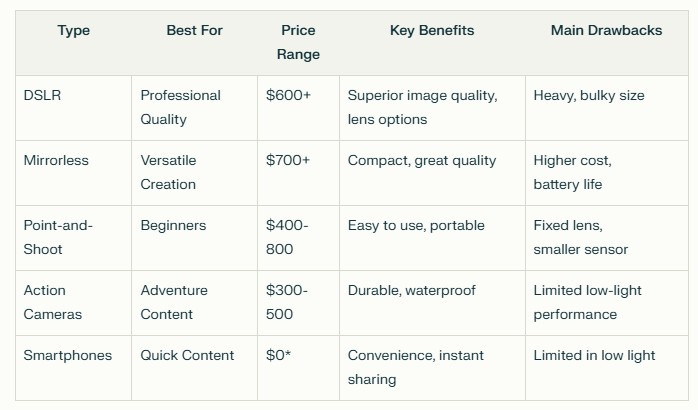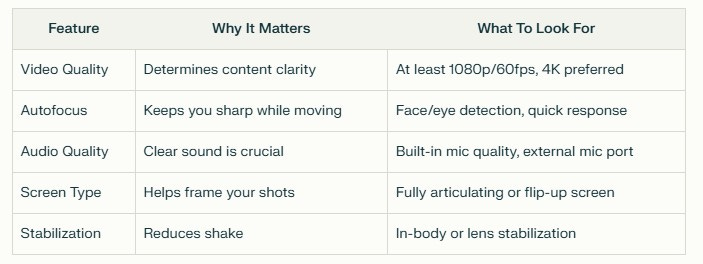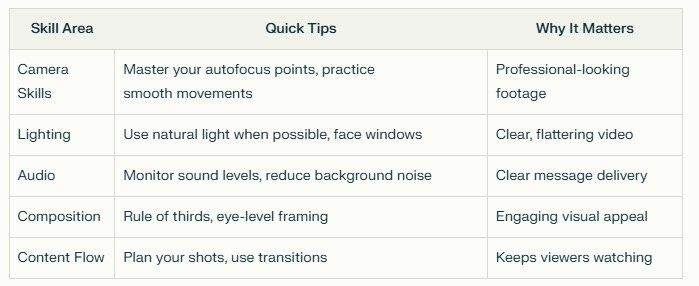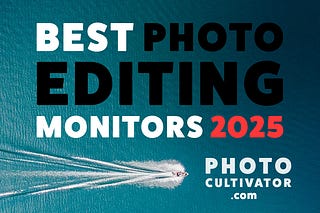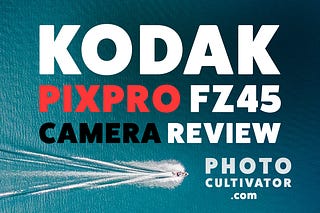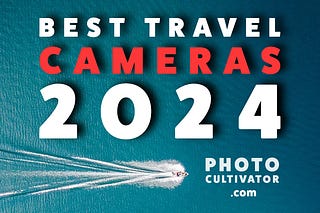
Discover more from Photo Cultivator
Top 5 Budget-Friendly Vlogging Cameras for Beginners (2025): Expert Picks & Comparisons
"Just use your phone!" they said.
But if shaky footage and poor audio are killing your vlogging dreams, you're in the right place.
The truth?
While killer content beats expensive gear, the right camera can transform your vlogs from amateur to amazing.
No more blurry footage, muffled audio, or frustrated editing sessions.
Skip the $2000+ cameras the "pros" push.
Here are the only vlogging cameras worth your money in 2025—all tested for real-world use, not just specs on paper.
Top Vlogging Cameras Compared
Quick Picks by Need:
Best Budget: Canon EOS R50 - Professional features without breaking the bank
Best Compact: Sony ZV-1 - Pocket-sized but powerful
Best Mirrorless: Sony ZV-E10 - Room to grow with interchangeable lenses
Best for Action: GoPro HERO11 Black- Adventure-ready and waterproof
Best Smartphone Stabilizer: DJI Osmo Mobile 6- Transform your smartphone into a vlogging powerhouse
Best Budget Vlogging Cameras
Canon EOS R50: Best Overall Value ($600-$700)
Perfect for: Beginners who want room to grow without overspending
Key Features:
4K video recording with stunning detail
Flip-out touchscreen for self-recording
Canon's renowned Dual Pixel autofocus
Compact, lightweight body design
Compatible with RF-mount lenses
Real-World Performance:
The EOS R50 shines in everyday vlogging scenarios.
Its autofocus keeps you tack-sharp while moving, and the flip screen makes framing shots effortless.
While battery life could be better, carrying a spare solves this minor inconvenience.
For more budget-friendly options, check out my guide on the best cameras under $300 for casual photography.
Nikon Z30: Compact Alternative ($700-$800)
Perfect for: Mobile creators who prioritize portability
Key Features:
4K/30p video capability
Vari-angle touchscreen
Built-in Wi-Fi/Bluetooth
Excellent eye-detection AF
Compact, lightweight design
Real-World Performance:
The Z30 proves itself as a capable vlogging companion, especially for travel content creators.
Its size makes it perfect for one-handed operation, though you'll want to consider the limited lens selection when planning future upgrades.
💡 Pro Tip: Both cameras work best with a small tripod for static shots. Consider budgeting an extra $50-100 for a compact tripod and spare battery.
Top Compact Vlogging Camera
Sony ZV-1: The Pocket Powerhouse ($700-$800)
Perfect for: Mobile creators who need professional features in a compact body
Key Features:
Purpose-built for vlogging
20.1MP 1-inch sensor
Real-time Eye AF tracking
Built-in ND filter
High-quality directional mic
Product Showcase setting
Real-World Performance:
The ZV-1 excels at what matters most for vloggers: keeping you in focus while delivering crisp, professional-looking footage.
The Product Showcase feature is a game-changer for review content, automatically switching focus to objects held up to the camera.
💡 Quick Tip: The ZV-1's small battery means you'll want to grab 2-3 spares for all-day shooting. Each battery typically lasts about 45-60 minutes of continuous recording.
Ideal Shooting Scenarios:
Daily vlogging
Product reviews
Indoor content creation
Travel documentation
Beauty/makeup tutorials
For a comparison with another popular compact camera, see my Sony HX99 vs Lumix TZ95 comparison.
Best Mirrorless Vlogging Cameras
Sony ZV-E10: The Creator's Choice ($700-$800)
Perfect for: Content creators ready to level up their production quality
Key Features:
24.2MP APS-C sensor
Interchangeable lens system
Advanced Eye AF tracking
Clear, crisp 4K video
Digital audio interface
Live streaming capability
Real-World Performance:
Think of the ZV-E10 as the ZV-1's bigger sibling with room to grow.
The larger sensor delivers noticeably better low-light performance, while the ability to swap lenses lets you achieve different creative looks—from wide-angle room tours to bokeh-rich beauty shots.
For lens recommendations, check out my guide on the best lenses for the Sony ZV-E10.
Sony ZV-E1: Premium Performance ($2,000-$2,200)
Perfect for: Serious creators who demand top-tier image quality
Key Features:
Full-frame sensor
Professional-grade stabilization
Outstanding low-light capability
Advanced AI autofocus
Cinema-quality color science
Real-World Performance:
The ZV-E1 represents the pinnacle of vlogging cameras, delivering stunning full-frame footage that rivals professional cinema cameras.
However, its price point and larger size make it overkill for most beginners.
💡 Pro Tip: For ZV-E10 users, start with the kit lens and add the Sony 10-18mm f/4 when you're ready for wider shots - perfect for room tours and travel content.
If you're considering Sony vs Canon, check out my comparison of Sony and Canon mirrorless cameras and lenses.
Phone Stabilizers for Vlogging
For those preferring to vlog with smartphones, a stabilizer is essential.
Here are two excellent options:
DJI Osmo Mobile 6: Smart Stabilization ($150-$170)
Perfect for: Smartphone vloggers seeking professional-looking footage
Key Features:
Magnetic quick-release mount
ActiveTrack 5.0 subject tracking
Built-in extension rod
Automated creative modes
Compact, foldable design
Real-World Performance:
Transform your smartphone into a professional vlogging rig.
The Osmo Mobile 6 eliminates shaky footage while adding creative possibilities through its intelligent tracking and gesture controls.
Perfect for walking-and-talking shots or dynamic B-roll.
Insta360 Flow: Versatile Alternative ($150-$170)
Perfect for: Cross-platform users needing reliable stabilization
Key Features:
Universal smartphone compatibility
AI-powered tracking
Built-in selfie stick
Automated shot modes
Compact design
Real-World Performance:
The Insta360 Flow offers similar stabilization quality to the DJI but with better Android compatibility.
While its app occasionally needs refinement, the hardware delivers smooth, professional-looking results consistently.
For more options, see my guide on smooth smartphone videos with compact gimbals.
Best Action Cameras for Adventure Vlogging
If your vlogging involves adventure or action, consider these rugged and compact action cameras:
GoPro HERO11 Black: Adventure-Ready ($400-$500)
Perfect for: Adventure vloggers and action sports creators
Key Features:
Stunning 5.3K video resolution
HyperSmooth 5.0 stabilization
Waterproof to 33ft (10m)
27MP photos
TimeWarp 3.0
Front and rear screens
Real-World Performance:
The HERO11 Black excels where other cameras fear to tread.
Whether you're surfing, mountain biking, or skiing, it delivers incredibly smooth, high-resolution footage.
The upgraded stabilization makes even the shakiest activities look buttery smooth.
DJI Osmo Action 3: Reliable Alternative ($300-$400)
Perfect for: Content creators needing durability on a budget
Key Features:
4K/120fps capability
RockSteady stabilization
Dual touchscreens
Extreme temperature resistant
Quick-release magnetic mount
Real-World Performance:
While it may not match the GoPro's absolute image quality, the Action 3 offers exceptional value with its robust build and innovative magnetic mounting system.
Perfect for extreme conditions and fast-paced activities.
💡 Pro Tip: For extended shooting, invest in the Endurance battery pack and keep your action cam in 4K/30fps for optimal battery life and heat management.
For more information on using GoPros, check out my GoPro guide for beginners and pros.
Additional Vlogging Camera Options
DJI Osmo Pocket 3: Compact Innovation ($400-$500)
Perfect for: Mobile creators seeking stabilized footage in a tiny package
Key Features:
Built-in 3-axis gimbal
4K video capabilities
Active tracking features
Compact all-in-one design
Rotating touchscreen
Real-World Performance:
The Osmo Pocket 3 combines a camera and stabilizer in one pocket-sized device.
Its unique form factor makes it ideal for travel vloggers and documentary-style content where discretion and portability matter.
Insta360 X3: Creative Freedom ($400-$500)
Perfect for: Content creators wanting unique perspectives
Key Features:
360-degree capture
5.7K video resolution
Invisible selfie stick effect
AI editing features
Waterproof design
Real-World Performance:
The X3 opens up creative possibilities impossible with traditional cameras.
Capture everything around you and choose your angles later. Perfect for immersive travel content and dynamic action shots.
💡 Pro Tip: Start with standard 'single-lens' mode while learning the camera, then experiment with 360-degree capture as you get comfortable with the workflow.
For underwater vlogging, check out my guide to underwater cameras.
Understanding Camera Types for Vlogging
Camera Types Compared
*Assuming you already own a smartphone—which you probably have anyway.
For a detailed comparison, see my DSLR vs Mirrorless Cameras Guide.
DSLR & Mirrorless Benefits
Interchangeable lenses for different looks
Superior low-light performance
Professional-looking depth of field
Better audio input options
More manual controls
Compact & Action Camera Advantages
Lightweight and portable
Often weather-resistant
Simple, intuitive controls
Built-in stabilization
Quick to set up and shoot
Smartphone Vlogging Perks
Always with you
Instant editing and sharing
Numerous creative apps
No extra gear needed
Great for social media
💡 Quick Tip: Start with what matches your content style.
Planning sit-down videos? Consider mirrorless.
Active lifestyle content? Look at action cameras.
Key Vlogging Camera Features
When choosing a vlogging camera, keep these important features in mind:
Essential Features Comparison
Must-Have Features Explained
Video Resolution & Frame Rates
4K: Best for future-proofing content
1080p/60fps: Ideal for smooth motion
24/30fps: Standard cinematic look
Autofocus Capabilities
Face/Eye tracking keeps you in focus
Touch-to-focus for product shots
Subject tracking for moving content
Audio Solutions
Built-in directional microphones
External microphone input
Wind noise reduction
Screen & Monitoring
Flip screen for self-recording
Touch capability for easy control
Bright enough for outdoor use
Image Stabilization
Reduces camera shake
Smooths walking footage
Helps in low light
💡 Pro Tip: Prioritize autofocus and audio quality over resolution—viewers will forgive slightly lower resolution but not poor focus or bad sound.
Tips To Level Up Your Vlogging Skills
Essential Vlogging Tips
Quick-Start Guide
Camera Setup
Set video quality (1080p/60fps for smooth motion)
Enable face/eye tracking autofocus
Check audio levels before recording
Format memory card regularly
Basic Shot Types
Talking head (classic vlog style)
B-roll (supporting footage)
Walking shots (movement)
Detail shots (close-ups)
Lighting Essentials
Face natural light sources
Avoid harsh overhead lighting
Use window light when indoors
Film during golden hours outdoors
Audio Fundamentals
Record in quiet environments
Test audio before full recordings
Monitor with headphones
Keep a consistent distance from the mic
💡 Pro Tip: Film a 1-minute test video before each session to check focus, lighting, and audio quality.
For the best times to buy a camera and save money, check out my guide on camera purchasing timing.
Frequently Asked Questions
Camera Selection
Q: What's the most important feature for a beginner vlogging camera?
The combination of reliable autofocus and a flip screen should be your priority. These features ensure you stay in focus and properly framed while recording yourself.
Q: How much should I expect to spend on my first vlogging camera?
Quality options exist in the $500-$800 range. The Canon EOS R50 and Sony ZV-1 offer excellent value in this price bracket.
Q: Can I start vlogging with just my smartphone?
Absolutely! Modern smartphones can capture excellent video quality. Adding a stabilizer like the DJI Osmo Mobile 6 ($150-$170) can significantly improve production value.
Technical Concerns
Q: What accessories do I need besides the camera?
Essential gear includes:
Tripod for stable shots
External microphone for better audio
Memory card (64GB minimum)
Spare battery
Q: How do I choose between a mirrorless and a point-and-shoot camera?
Q: What resolution should I film in?
1080p is perfectly acceptable for beginners, but 4K offers more flexibility for editing and future-proofs your content.
Finding Your Perfect Vlogging Camera
And that’s it!
The best camera is the one that fits your specific needs and budget.
Start with what you can afford and upgrade as your skills and channel grow.
Quick Decision Guide
Start with the Canon EOS R50 if you want:
Room to grow
Professional features
Best value under $700
Choose the Sony ZV-1 if you need:
Ultimate portability
Dedicated vlogging features
Simple operation
Go with the GoPro HERO11 if you create:
Adventure content
Action sports videos
Underwater footage
Next Steps
Choose your camera based on your content style
Master the basic features before exploring advanced settings
Focus on creating consistent content
Upgrade accessories as needed
💡 Final Tip: Even smartphone vlogging can build an audience if your content is engaging.
I hope that helps,
-Hakan
[Last Updated: Jan 2025]





